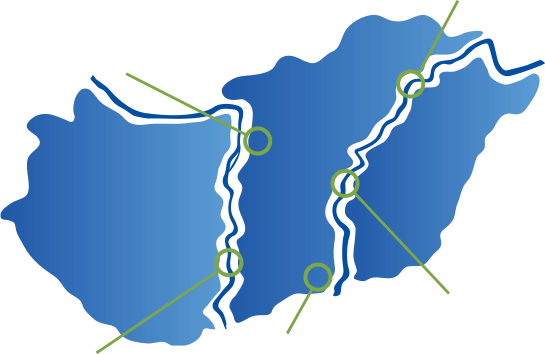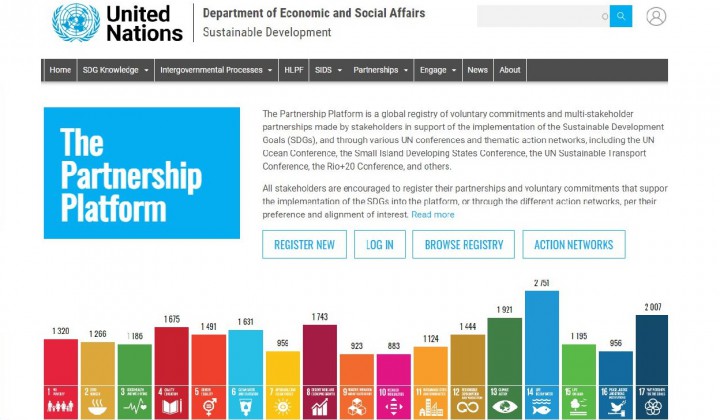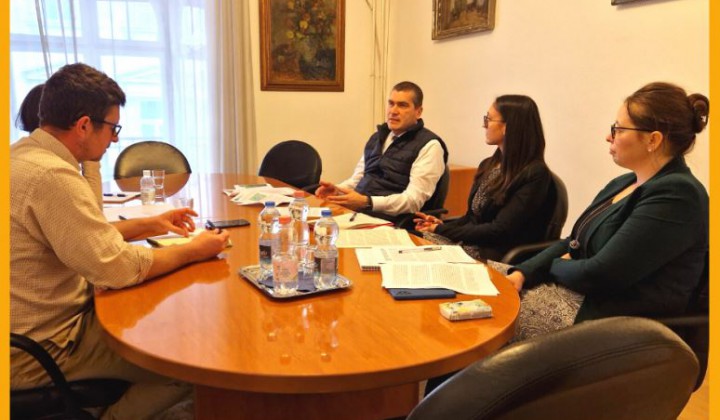Bátya
Innovative model of managing rainfall events, using multiple basin wetlands (used to be clay-pits before) in order to manage several water-related climate events, droughts and extreme rainfall events. The key purpose of involving local clay-pits into climate change adaptation is to collect and retain rainwater in extreme rainfall events, while ensure the infiltration of the retained rainwater to recharge groundwater in heat wave and drought periods. Besides, this restored and expanded clay-pit will serve as freshwater habitat and buffer zone around the settlement, improving the local climate through evaporation. Thanks to the two-pond design, at least one of them will have an open water surface while the other provides different habitat conditions. As a result, the amount of local water resources increases and helps to address the inequalities between water scarcity and water abundance periods.
Read morePüspökszilágy
Model for the adaptation of hilly settlements exposed to the risks of heavy rainfall events. In the project Püspökszilágy represents possible solutions to climate change problems of hilly and upland villages with the design of an integrated natural water retention system (NWRM) both the lower and upper watersheds. This will demonstrate how upland municipalities can respond to climate change vulnerability through integrated, basin-scale NWRM implementation. The goal of the settlement is to retain water and sediment (coming with the flood waves) in the upper river basin before reaching the built environment.
Read moreRuzsa
Model for the adaptation of hilly settlements exposed to the risks of heavy rainfall events. In the project Püspökszilágy represents possible solutions to climate change problems of hilly and upland villages with the design of an integrated natural water retention system (NWRM) both the lower and upper watersheds. This will demonstrate how upland municipalities can respond to climate change vulnerability through integrated, basin-scale NWRM implementation. The goal of the settlement is to retain water and sediment (coming with the flood waves) in the upper river basin before reaching the built environment.
Read moreRákócziújfalu
Model for combined climatic problems, including inland excess water inundations and droughts. The aim is to retain excess water caused by inland excess water inundations and heavy rainfalls, in order to mitigate drought risks. The municipality have identified its accessible natural assets - channels and natural depressions - and aims to design and implement NWRM to capture excess water in inundation periods and rainwater in heavy rain periods and retain this water to help reduce the risk of droughts. Besides, a wetland will be created at the site of a low-lying growing area.
Read moreTiszatarján
Model for settlements along large rivers with degraded floodplains. The aim of the settlement is to increase local bioenergy production, reduce invasive plant species, water retention, semi-natural grazing and promote ecotourism. For this purpose they will implement small-scale NWRM in the settlement’s floodplain: create open surface water bodies on the territory of a clay-pit system and connect them with each other. They will function as connected permanent water bodies. This will provide natural water supply through infiltration to the groundwater which will be beneficial for agriculture; and surface water as spawning, hiding and feeding place for water birds, amphibians and the grazing animals. Also this wetland will store inland excess water from croplands.
Read more



